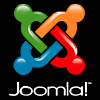What are some example agencies that provide web content management solutions?
 One of the most common CMS companies that offers an initally free content management system application is "Cushy CMS". I have used this service for an actual client in the past, and have found that they are fully supportive in technical help when needed and this is a great benefit for new users.
One of the most common CMS companies that offers an initally free content management system application is "Cushy CMS". I have used this service for an actual client in the past, and have found that they are fully supportive in technical help when needed and this is a great benefit for new users.
Features of the application include:
- An unlimited site offer up to a maximum of 5 sites
- No training required since the company has an easy
introductory video that explains the process.
- No programming requirements for users.
- No server requirements since it is a hosted application.
 A second common web content management system is "Word Press" where blogging
and content management systems are combined. Word Press was relatively unknown to me
in the past few years, since I have misunderstood blogging sites and thier true purpose.
Since then it has evolved into a full service that I now find appealing and will use
for business purposes.
A second common web content management system is "Word Press" where blogging
and content management systems are combined. Word Press was relatively unknown to me
in the past few years, since I have misunderstood blogging sites and thier true purpose.
Since then it has evolved into a full service that I now find appealing and will use
for business purposes.
Features of the application include:
- It is an open source project where everyone is submitting content.
- It can be customized for just about any content you need to post.
- You can add widgets and plugins.
- It is mobile friendly per say, in that it's content fits most devices.
- You can add PHP to content which is realtively new to myself, but will engage in trying.
- You can build your own site through their services, which is a good benefit.
- Utilizes MySQL also.
- Theme content is yet another benefit I find interesting but limited.
 A third common web content management system I have found is "Joomla". According to thier services, they offer both website service
building and website content management. It appears that this
service is probably one of the more robust services since they offer online applications in addition to website content management.
A third common web content management system I have found is "Joomla". According to thier services, they offer both website service
building and website content management. It appears that this
service is probably one of the more robust services since they offer online applications in addition to website content management.
Features of the application include:
- Website Creation
- On-line Applications
- It is also an open source application.
- Can be customized for large or small companies or organizations.
 A fourth web content management system I have found is "Pligg".
This is yet another open source project management type application where it is Free initially. They offer a very interesting alternative, such as an infinite scrolling feature where content is automatically pulled when they reach the bottom of a page while viewing.
A fourth web content management system I have found is "Pligg".
This is yet another open source project management type application where it is Free initially. They offer a very interesting alternative, such as an infinite scrolling feature where content is automatically pulled when they reach the bottom of a page while viewing.
Features of the application include:
- Member Profiles
- Allowing users to share their profiles with other users.
- An advanced comment system with a sorting feature.
- According their company they are extensive users of RSS feeds.
- Real time viewing of users interacting with your website.






